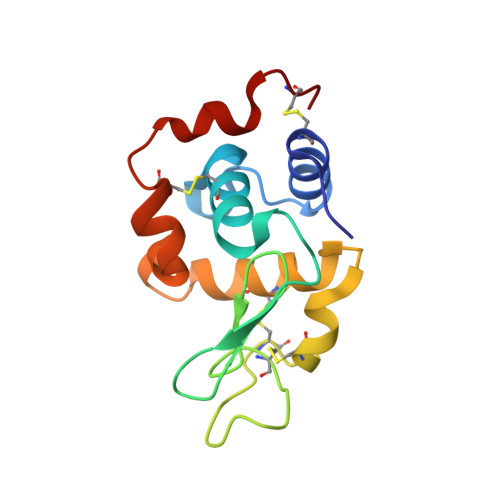Protein crystals as a key for deciphering macromolecular crowding effects on biological reactions.
Ferreira, C., Pinto, M.F., Macedo-Ribeiro, S., Pereira, P.J.B., Rocha, F.A., Martins, P.M.(2020) Phys Chem Chem Phys 22: 16143-16149
- PubMed: 32638771
- DOI: https://doi.org/10.1039/d0cp02469d
- Primary Citation of Related Structures:
6RT1, 6RT3, 6RT9, 6RTA - PubMed Abstract:
When placed in the same environment, biochemically unrelated macromolecules influence each other's biological function through macromolecular crowding (MC) effects. This has been illustrated in vitro by the effects of inert polymers on protein stability, protein structure, enzyme kinetics and protein aggregation kinetics. While a unified way to quantitatively characterize MC is still lacking, we show that the crystal solubility of lysozyme can be used to predict the influence of crowding agents on the catalytic efficiency of this enzyme. In order to capture general enthalpic effects, as well as hard entropic effects that are specific of large molecules, we tested sucrose and its cross-linked polymer Ficoll-70 as additives. Despite the different conditions of pH and ionic strength adopted, both the crystallization and the enzymatic assays point to an entropic contribution of approximately -1 kcal mol-1 caused by MC. Our results demonstrate that the thermodynamic activity of proteins is markedly increased by the reduction of accessible volume caused by the presence of macromolecular cosolutes. Unlike what is observed in protein folding studies, this MC effect cannot be reproduced using equivalent concentrations of monomeric crowding units. Applicable to any crystallizable protein, the thermodynamic interpretation of MC based on crystal solubility is expected to help in elucidating the full extent and importance of hard-type interactions in the crowded environment of the cell.
- LEPABE - Laboratory for Process Engineering, Environment, Biotechnology and Energy, Faculty of Engineering, University of Porto, Rua Dr. Roberto Frias, 4200-465 Porto, Portugal.
Organizational Affiliation:


















